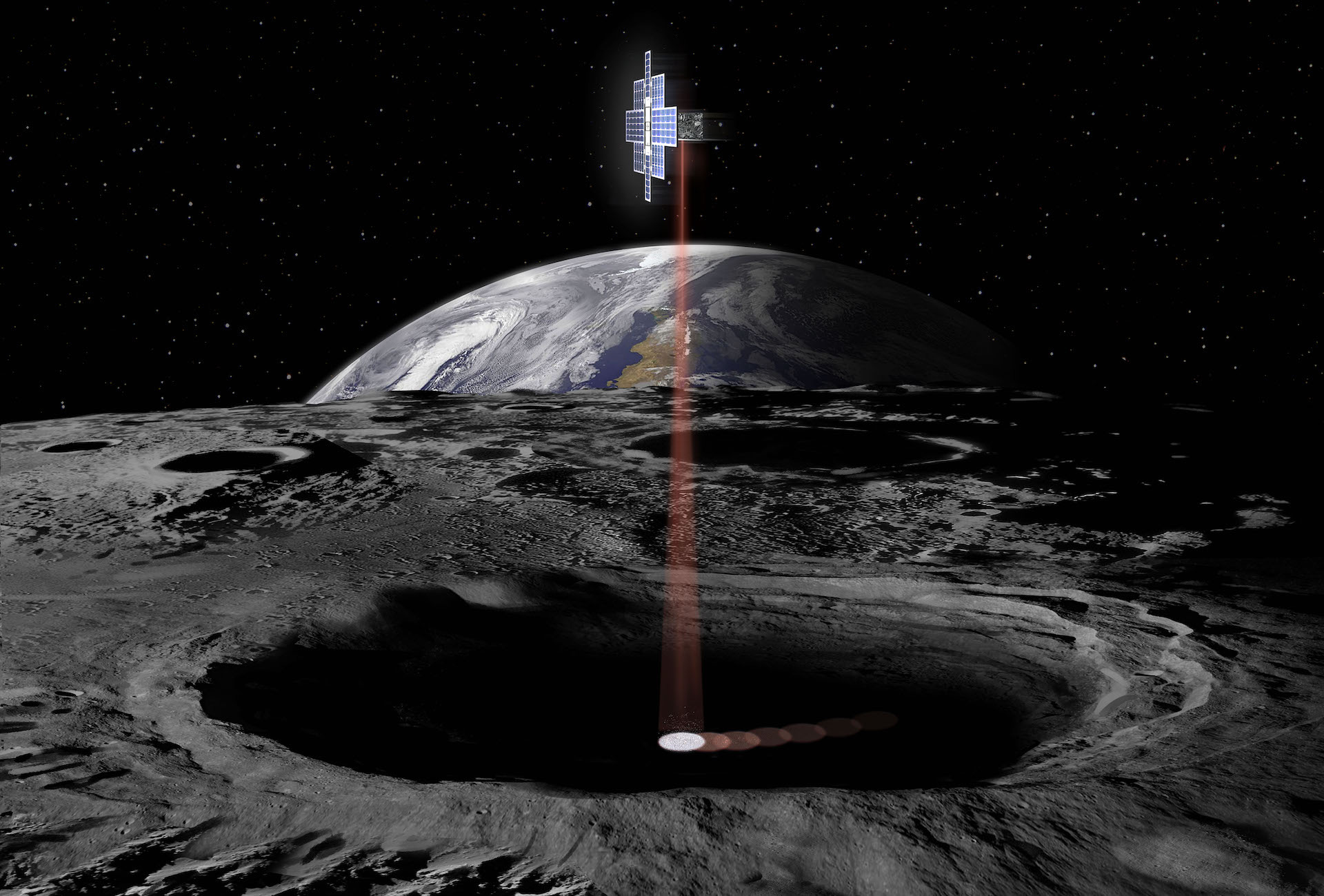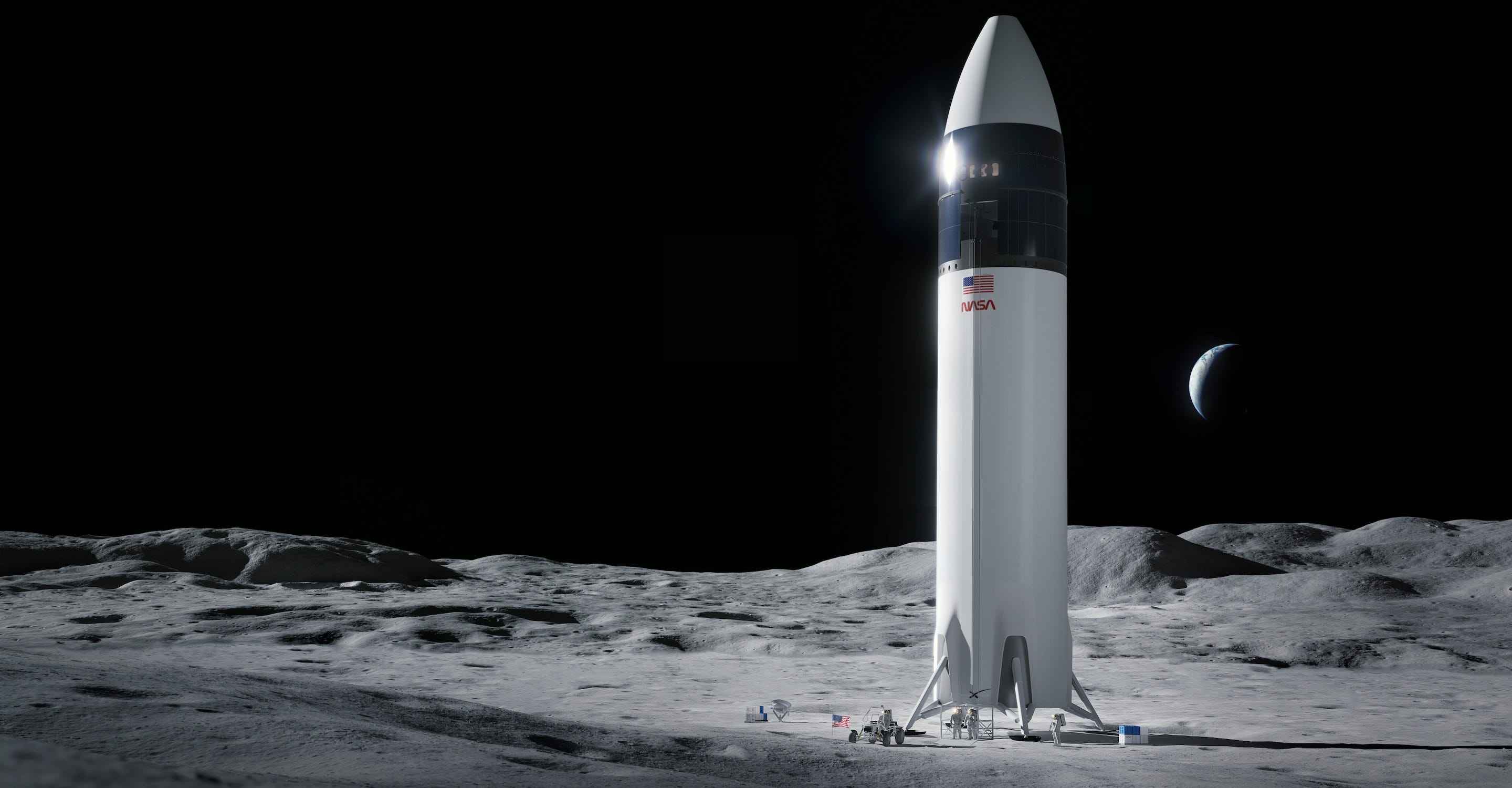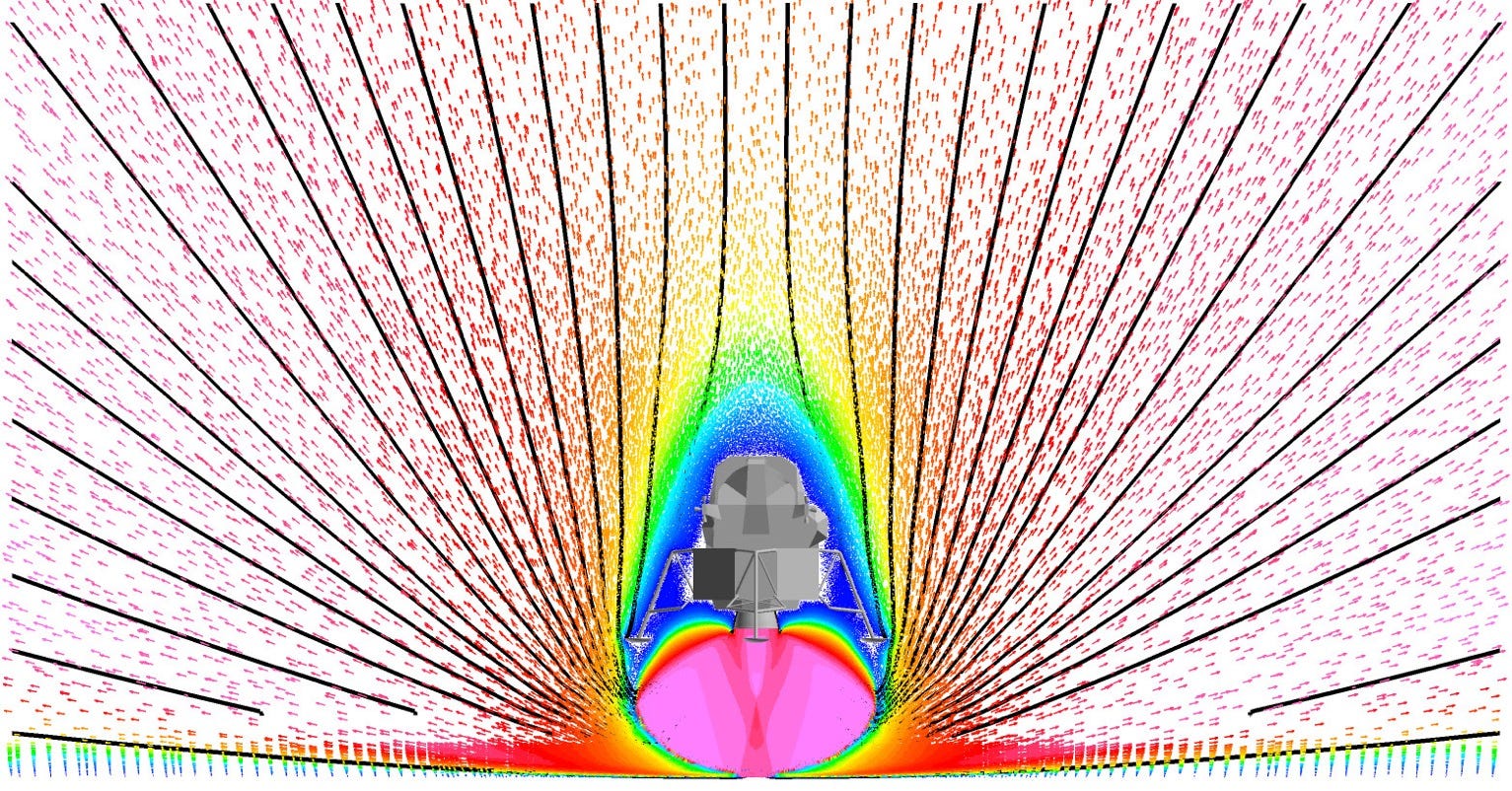Moon Monday #101: Three November launches, an exciting Artemis IV mission, and more updates
Lunar Flashlight to launch alongside ispace’s Moon lander in November
In a delightful update, NASA announced last week that the Lunar Flashlight CubeSat will launch as a secondary payload between November 9–15 onboard the same SpaceX Falcon 9 rocket that will lift ispace Japan’s first Moon lander. However, ispace has announced just today that the mission will launch no earlier than November 22.
Just like the lunar en-route CAPSTONE spacecraft, the 14-kilogram Lunar Flashlight CubeSat will use fuel-efficient paths to and around the Moon, including taking a ballistic trajectory to reach Luna and being in a near-rectilinear halo orbit after. As this highly elliptical orbit takes Lunar Flashlight just 15 kilometers above the lunar south pole, the spacecraft will use its four-laser reflectometer—a spaceflight first—and its spectrometer to identify locations and abundances of water ice inside permanently shadowed regions. Lunar Flashlight is part of the slew of NASA-funded robotic missions over the next 5 years that will take specific measurements to help scientists globally get an actionable grasp on the nature of lunar water.

Lunar Flashlight was originally supposed to fly along with 10 other small satellites on NASA’s Artemis I Moon mission but it couldn’t be completed in time for integration with the SLS rocket. (As it turns out, Artemis I itself has seen multiple delays, and NASA is now aiming for a November 14 launch.) This led NASA to announce in June that Lunar Flashlight will co-launch with Intuitive Machines’ first Moon lander end of this year. But the latter mission has been delayed to 2023, prompting the agency to take this new launch decision.
Artemis IV to include a Moon landing; bigger deal than it may seem
Jeff Foust reports that NASA’s Artemis IV mission, aiming for launch in 2027 on the upgraded Block 1B variant of the SLS rocket, will see a lunar landing after all. NASA originally intended for Artemis IV to carry astronauts to the agency-led international Gateway lunar station and deliver the station’s ESA- and JAXA-developed International Habitation module (i-HAB), which would provide more space for crew to live, work, and conduct research in. All of that stays, with a landing now added as a separately launched mission element just like the first crewed landing with HLS Starship on Artemis III.
The Artemis IV lander is likely to be an upgraded SpaceX Lunar Starship rather than its upcoming competitor, the latter of which will start competing for future crewed landings post Artemis V. The upgraded Lunar Starship might carry 4 or more astronauts to the surface, as opposed to 2 on Artemis III, and should support surface stays of at least 33 Earth days, in principle, compared to the 7 days of Artemis III.

This Artemis IV update is a huge deal. In just one mission after Artemis III’s crewed Moon landing demonstration mid-decade, NASA will have upgraded its entire lunar transportation stack—from improving payload capacity to lunar orbit by 10,000 kilograms with SLS Block 1B to sending astronauts to the Gateway for the first time to demonstrating enhanced landing and potentially extended surface stay capabilities to bringing more scientifically valuable lunar samples to Earth.
Of course, the catch is that Artemis IV now requires all of these elements to be concurrently ready—from the i-HAB module to the upgraded Lunar Starship and the SLS Block 1B rocket. The fact that each of its major elements are being contracted in very distinct ways by different organizations makes Artemis IV an embodiment of the beast that is NASA’s Artemis campaign.
The most likely and longest delay to Artemis IV could be from the Mobile Launcher 2 required to launch the SLS Block 1B rocket. In a scathing report released in June, NASA’s Office of Inspector General (OIG) detailed the poor progress and ballooning cost of the 118-meter Mobile Launcher 2. The OIG estimates that the launcher will be built no earlier than November 2026, after which it will need to be tested, meaning Artemis IV has a very slim chance of actually taking off in 2027. Regardless of its exact launch year anytime before 2030, Artemis IV would be a giant leap for the agency.
Many thanks to Epsilon3 for sponsoring this week’s Moon Monday.
Thanks also to Adithya Kothandhapani and Vishesh Vatsal, both from SkyServe, for supporting my independent writing.
Avoiding hardware damage and conflict on the Moon
On October 25, NASA’s Office of Technology, Policy, and Strategy (OTPS) published a detailed report prompting the agency and its international partners to plan for several policy and technical challenges that could stem from the increasing Moon landing missions by entities worldwide, especially those clustered at the relatively small but water-rich south pole. The challenges range from protecting heritage sites, like those of Apollo, to making sure activities by one organization don’t hinder or damage the other by establishing “safety zones”. I won’t go into details here because the report’s executive summary is pretty good and straightforward, and so instead it may be more useful to highlight some recent related developments.
- On December 31, 2020, the U.S. President signed into law the “One Small Step to Protect Human Heritage in Space Act”, which requires NASA to add recommendations for its commercial and international partners to prevent future lunar activities from harming Apollo artifacts. This could be extended to include the pre-Apollo Surveyor landers too.
- One bit from the report caught my eye: “Ensure our understanding of navigable pathways between sites of interest is robust; if there continues to be a need to protect these pathways, identify them as “transit corridors” and ensure their protection; if fixed facilities must be placed on these corridors, make their locations known and ensure they do not block mobile assets.”
- A White Paper submitted to the 2023-2032 Decadal Survey reviewed our current knowledge of how plumes emitted by Moon and Mars landers interact with the surface. To protect hardware from lander plume effects, the paper strongly recommends all future NASA missions carry not just descent imagers but also instruments for specific measurements of plume effects, and that such data be public. It also called for NASA to fund the development of related lunar infrastructure such as dust-mitigating landing pads.
- NASA has already been looking for sufficiently elevated locations for its Artemis Moonbase that are also at least a kilometer away from the crewed and cargo landing areas. This is to protect the lunar base from huge amounts of high-speed debris that visiting spacecraft will kick off while landing. Contamination from spacecraft is also why astronauts will have to venture far away from the landing and base sites to obtain pure surface samples for science.

ISRO really did delay Chandrayaan 3 for OneWeb
Last week I argued that ISRO pushed back the launch of its Chandrayaan 3 Moon landing mission to accommodate two launches of OneWeb satellites. An r/ISRO subreddit discussion now cements that as fact.
- u/Vyomagami points out that ISRO’s 2020–21 Annual Report (and indeed the 2021–22 report as well) mentions Chandrayaan 3’s launch vehicle as specifically being the same GSLV Mk III that lofted OneWeb satellites to orbit last week. Naturally, this snatch extends to the next Mk III and the next batch of OneWeb satellites.
- In an interview with The Hindu late last week, ISRO Chief S. Somanath acknowledged the above stating that space science isn’t and has never been ISRO’s priority. He did add that it must become a priority in the future along with increased budgets. As far as I can tell, this is the first time a top-level ISRO official has acknowledged the above instead of pretending otherwise.
Well, it sucks to be right about this one. :(
More Moon
- Following tests related to the flight termination system this week, NASA will transport the fully stacked SLS rocket from its assembly building to the launchpad on November 4. If all goes to plan, it will launch on November 14 for its long-awaited Artemis I mission to send an uncrewed Orion spacecraft around the Moon and back.
- Hardware for NASA’s Artemis II mission to carry crew around the Moon and back is progressing. The mission’s 15,000-kilogram European Service Module—which will provide propulsion, water, oxygen, thermal control, and electrical power to the Orion capsule hosting astronauts—has been mated with the adapter which will connect it to Orion. The service module will now undergo a series of space-simulating tests and various verification tests for its hardware interfaces.
- Quantum Space, who want to develop serviceable spacecraft platforms in cislunar space, says their first commercial lunar satellite QS-1 will launch in October 2024 on a 3-year mission to scan and track hardware in cislunar space using a high-resolution optical imager. Such capability would’ve certainly been helpful to track the rocket body that smashed on the Moon’s farside earlier this year.
- This month Astrobotic opened the non-profit Moonshot Museum at their facility. The museum’s flagship attraction is a large clean room window through which people can see the company’s Moon landers and rovers being built. There are also hands-on lunar exploration activities, workshops, and guidance on all possible career paths in space.
Support Moon Monday?
It takes a lot of effort and time every single week to craft this informed, exhaustive, and context-providing newsletter, which is also the only one in the world to cover global lunar updates of all kinds. I’m the sole person researching, writing, editing, publishing, and even publicizing Moon Monday. If you’ve been enjoying reading my work but have never shared it, consider posting about this one on your digital socials or sending it to your friends and colleagues?
I would also appreciate donations as a show of support for my labor of lunar love.
→ Browse the Blog | About
